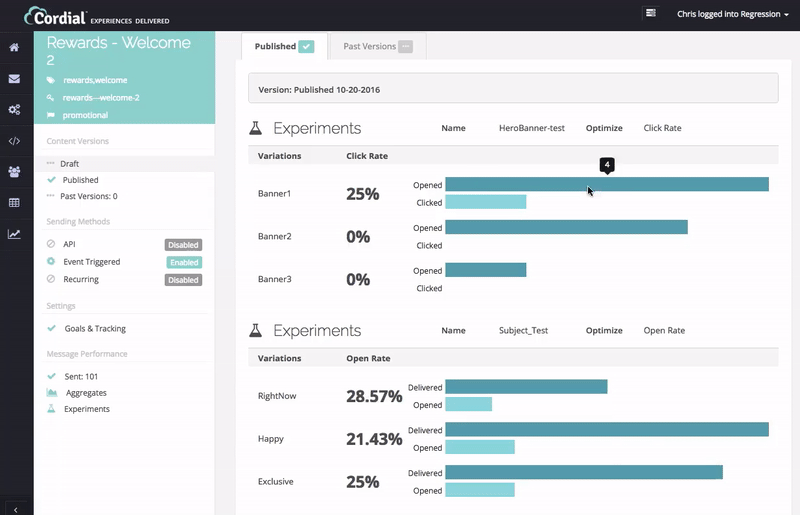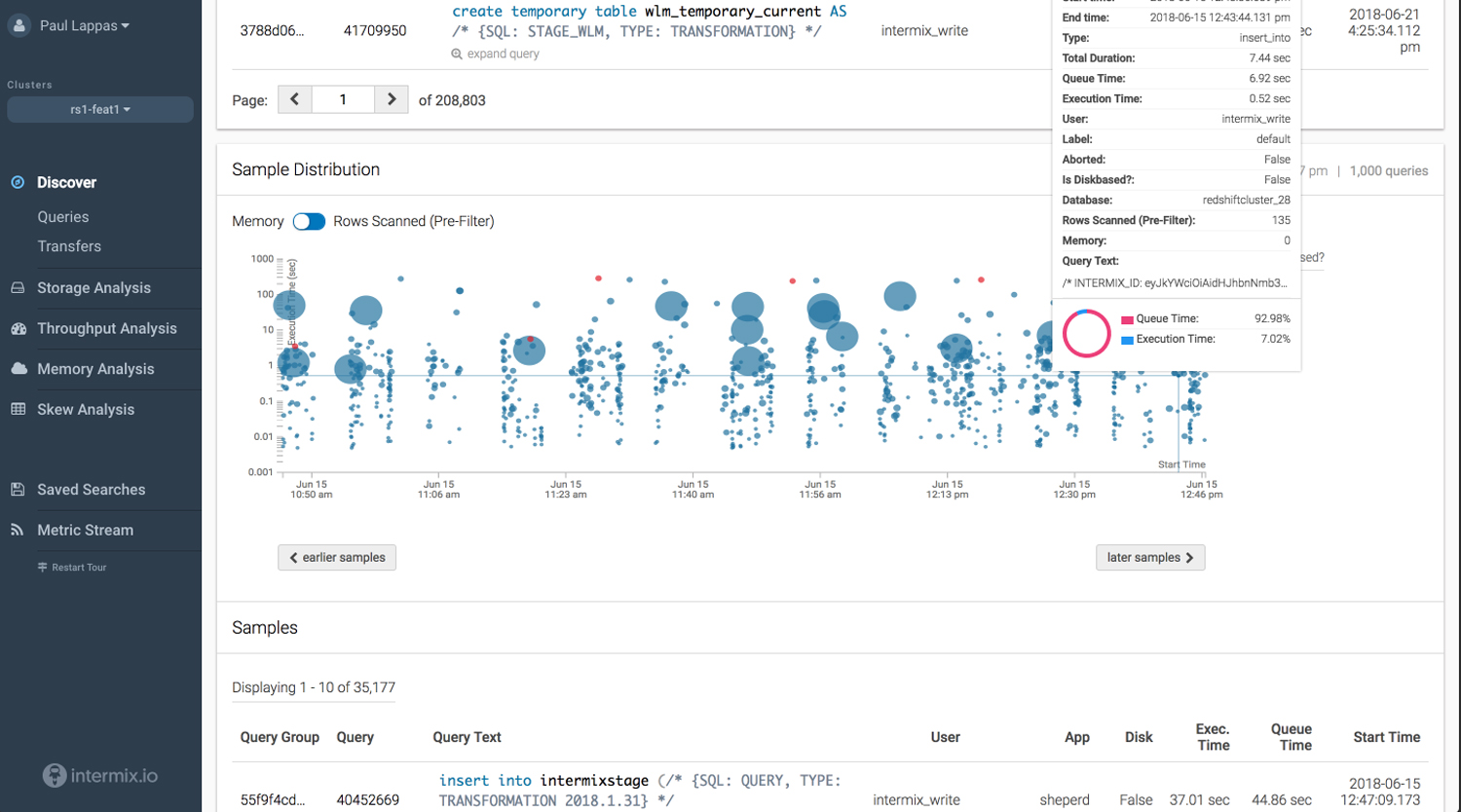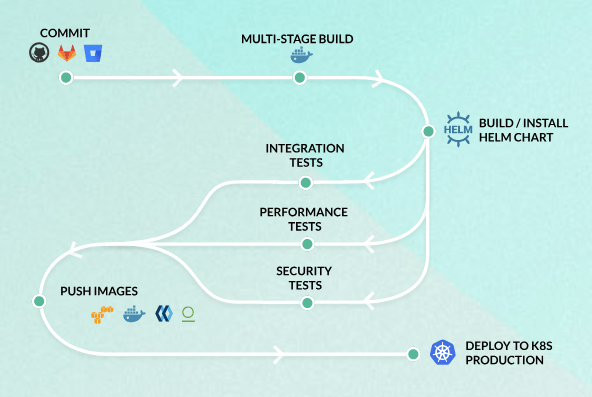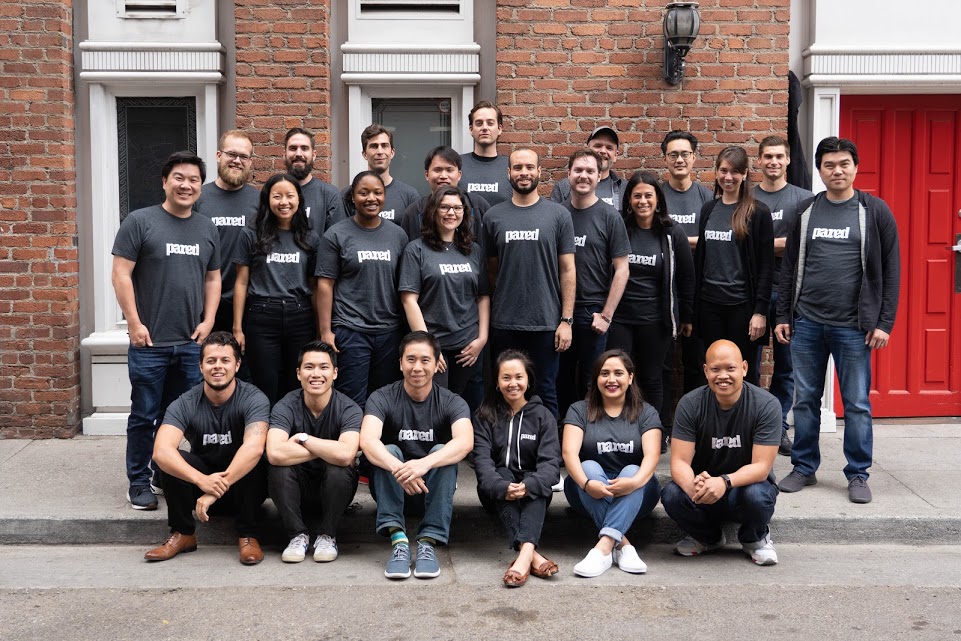Fundings & Exits
Auto Added by WPeMatico
Auto Added by WPeMatico
French startup Taster, formerly known as Mission Food, is building restaurants around big cities specifically for Deliveroo, UberEats and Glovo. These restaurants don’t have any tables, they’re all about serving food on online platforms.
The startup just raised a $4 million funding round led by Sunstone Capital, with Global Founders Capital, Thierry Gillier and LocalGlobe also participating. Kima Ventures and Marc Menasé participated in the previous round.
If you look at food startups, it all started with Just Eat, Grubhub and Seamless listing restaurants with delivery fleets. This way, instead of keeping a pile of flyers with phone numbers, you can find all the pizza and sushi places on one site.
But Deliveroo, UberEats, Glovo and Postmates introduced a new chunk of restaurants to deliveries. For the first time, regular restaurants could start accepting online orders. Startups could take care of the orders and deliveries.
And some restaurants have become instant hits on those platforms. But it doesn’t necessarily scale as much as they would want. They’re still constrained by the size of their kitchens, and opening a new restaurant is a big deal.
That’s why Deliveroo started investing in satellite kitchens for the most popular restaurants — these kitchens are basically containers on car parks.
Taster doesn’t want to work with existing restaurants. The company wants to create new restaurant chains instead and control the menu and the kitchens.
The name Taster might not be familiar, but you may have already ordered from a Taster virtual restaurant. The company has set up three Mission Saigon restaurants in Paris, one in Madrid and one in Lille.
You may have also ordered from O Ke Kai’s two restaurants in Paris. More recently, Taster launched Out Fry.
As you can see, Taster has been quite aggressive when it comes to rolling out new restaurants. When you find those “restaurants” on Deliveroo or another platform, nothing tells you that it isn’t actually a restaurant but just a kitchen.

This is a smart approach, as Taster can keep the costs down. It doesn’t need to rent big spaces, it doesn’t need as much staff and it doesn’t handle deliveries. By listing its restaurants on third-party platforms, Taster can also more easily compete with full-stack startups, such as Frichti, Nestor, FoodChéri and others.
But Taster’s success might be an issue. If the startup manages to take over Deliveroo and UberEats, traditional restaurants might complain. Deliveroo and UberEats could also change their rules and delist them overnight.
Taster is highly dependent on those third-party platforms. But it shouldn’t be an issue for now, as more restaurants bring more customers for delivery companies.

Powered by WPeMatico
Cordial, a San Diego startup building what CEO Jeremy Swift described as a “truly next-generation platform” for email marketing, has raised $15 million in Series B funding.
Swift and his co-founders come from email marketing company BlueHornet/Mapp Digital, which he said gave them the background to see “the market was really screaming: There needs to be a better way.”
We’ve written about plenty of other email marketing products. For example, last week I covered Stensul, which focuses on the email creation process. But Swift argued that most startups are building “point solutions” that sit on top of existing email platforms, whereas Cordial is “unequivocally” taking on the big marketing clouds offered by Oracle, Adobe, IBM and Salesforce.
“Cordial has gone to market to say you don’t need a legacy solution, plus a whole host of other point solutions, to try and do real-time messaging in a better way,” he said.
When Swift and Sales Engineering Manager Justin Soni gave me a quick demo of the Cordial platform, one of the big distinctions they pointed to was the way it uses customer data. Rather than targeting and customizing emails based on broad customer segments, they showed me how a Cordial email can incorporate dynamic elements that are updated with real-time, personal data — as Soni clicked around on different products on the merchant website, the email he was creating changed based on that behavior.

In addition, Cordial applies machine learning technology to optimize the emails — not just testing out variations on one element, but every part of the email, from the subject line to the call-to-action button.
And while Cordial started out with email, Swift said it’s expanded to include other messaging channels like push notifications and SMS. All of that can be coordinated from within a tool called Podium, where a marketer uses a visual interface to build different communication flows based on customer actions.
Cordial previously raised $6 million in Series A funding. Companies using the platform include Freshly, La Quinta and 1-800-Contacts.
The new funding was led by PeakSpan, with participation from Upfront Ventures and High Alpha. Swift said this will allow Cordial to continue adding new marketing channels (the goal is one per quarter) and to continue investing in the technology.
Powered by WPeMatico
For any company built on top of machine learning operations, the more data it has, the better it is off — as long as it can keep it all under control. But as more and more information pours in from disparate sources, gets logged in obscure databases and is generally hard (or slow) to query, the process of getting that all into one neat place where a data scientist can actually start running the statistics is quickly running into one of machine learning’s biggest bottlenecks.
That’s a problem Intermix.io and its founders, Paul Lappas and Lars Kamp, hope to solve. Engineers get a granular look at all of the different nuances behind what’s happening with some specific function, from the query all the way through all of the paths it’s taking to get to its end result. The end product is one that helps data engineers monitor the flow of information going through their systems, regardless of the source, to isolate bottlenecks early and see where processes are breaking down. The company also said it has raised seed funding from Uncork Capital, S28 Capital, PAUA Ventures along with Bastian Lehman, CEO of Postmates and Hasso Plattner, founder of SAP.
“Companies realize being data driven is a key to success,” Kamp said. “The cloud makes it cheap and easy to store your data forever, machine learning libraries are making things easy to digest. But a company that wants to be data driven wants to hire a data scientist. This is the wrong first hire. To do that they need access to all the relevant data, and have it be complete and clean. That falls to data engineers who need to build data assembly lines where they are creating meaningful types to get data usable to the data scientist. That’s who we serve.”

Intermix.io works in a couple of ways: First, it tags all of that data, giving the service a meta-layer of understanding what does what, and where it goes; second, it taps every input in order to gather metrics on performance and help identify those potential bottlenecks; and lastly, it’s able to track that performance all the way from the query to the thing that ends up on a dashboard somewhere. The idea here is that if, say, some server is about to run out of space somewhere or is showing some performance degradation, that’s going to start showing up in the performance of the actual operations pretty quickly — and needs to be addressed.
All of this is an efficiency play that might not seem to make sense at a smaller scale. The waterfall of new devices that come online every day, as well as more and more ways of understanding how people use tools online, even the smallest companies can quickly start building massive data sets. And if that company’s business depends on some machine learning happening in the background, that means it’s dependent on all that training and tracking happening as quickly and smoothly as possible, with any hiccups leading to real-term repercussions for its own business.
Intermix.io isn’t the first company to try to create some application performance management software. There are others like Data Dog and New Relic, though Lappas says that the primary competition from them comes in the form of traditional APM software with some additional scripts tacked on. However, data flows are a different layer altogether, which means they require a more unique and custom approach to addressing that problem.
Powered by WPeMatico
Codefresh, a continuous integration and delivery platform built for the Kubernetes container ecosystem, today announced that it has raised an $8 million Series B round led by M12, Microsoft’s venture fund. Viola Ventures, Hillsven and CEIF also participated in this round, which brings the company’s total funding to $15.1 million.
In a market where there are seemingly more CI/CD platforms every day, Codefresh sets itself apart thanks to its focus on Kubernetes, which is now essentially the de facto standard for container orchestration services and which is seeing a rapid growth in adoption. The service promises it can help developers automate their application deployments to Kubernetes and that teams will see “up to 24X faster development times.” That number seems a bit optimistic, but the whole point of adopting Kubernetes and CI/CD is obviously to speed up the development and deployment process.
 “The meteoric rise of Kubernetes is happening so fast that most toolchains haven’t kept up, and M12 knows it,” said Raziel Tabib, Codefresh co-founder and CEO. “With this latest round of funding we’re going to aggressively accelerate our roadmap and expand our customer base.”
“The meteoric rise of Kubernetes is happening so fast that most toolchains haven’t kept up, and M12 knows it,” said Raziel Tabib, Codefresh co-founder and CEO. “With this latest round of funding we’re going to aggressively accelerate our roadmap and expand our customer base.”
The Codefresh platform hit general availability in 2017 and the company currently claims about 20,000 users, including the likes Giphy.
Powered by WPeMatico
While everybody is focused on self-driving cars, Shone is working on autonomous technologies for container ships. The startup doesn’t want to turn those giant ships into unmanned vehicles, but it wants to help seafarers and make ships more efficient.
After attending Y Combinator, Shone recently raised a $4 million round from Alven, Liquid 2, Paul Graham, David Marcus and D. Scott Phoenix.
“The basic idea is that autonomous ships are coming. Overall, it seems unavoidable,” co-founder and CEO Ugo Vollmer told me. “And yet, there are still 25 people on the boat and it runs on Windows.”
The team spent a lot of time talking with people working in the shipping industry to understand their needs. After traveling on container ships and buying a tiny boat for prototyping, Shone is already working with a shipping company to retrofit their ships with their technology.
“Our vision is that it’s going to happen progressively,” Vollmer said. “There will be a lot of navigation assistance systems first.”
At first, it could lead to fewer people on the boat. There are around 15 people maintaining the engine and the machinery. These people won’t go away any time soon. But there are also around ten people who are keeping an eye on the radar, on the different tools and also on the sea itself. They rotate as they need to have a small team in the cabin 24/7.
This second team could need some help, and this is where Shone shines. The startup adds a few sensors but mostly hooks their system to existing sensors. While there are a ton of sensors already, none of them communicate together.
Shone can combine all this data and analyze it to give some insights. Eventually, the startup plans to recommend different courses to save some fuel and time. Existing autopilot solutions on ships is more like cruise control in cars. You can follow a predetermined path, but you can’t say “let’s go from A to B”.
And saving fuel is key when it comes to global warning. Each ship carries a mountain of goods, so it’s quite efficient when you think about the impact of one ton of goods. But if you can make a container ship slightly more efficient, it would have a huge impact on the environment.
“If you can make a 1 percent optimization, you have a bigger impact than Tesla today,” Vollmer said. It’s hard to compare those two things as cars and ships are different beasts though.
For now, Shone is only focusing on deep sea. The crew doesn’t handle the first and last mile anyway as someone from the harbor usually comes on board to guide you to the dock.
Shone has signed a partnership with CMA CGM to collect data and add some hardware devices. It’s still early days for Shone as the company is first focusing on situational awareness before moving further into recommendations.
Powered by WPeMatico
On the busiest nights, a restaurant can’t afford to even lose a dishwasher to getting sick or not being around — or simply ghosting on the company — and end up frustrating the whole experience for the rest of the staff and restaurant goers.
It’s a problem that Will Pacio was acutely familiar with during his time at Spice Kit, and it’s why he and Dave Lu — who didn’t really have much experience other than delivering Chinese food in high school, but wanted to get into the industry — started Pared. It essentially serves as an on-demand tool for restaurant workers, who might find themselves already working across multiple different jobs or multiple different restaurants and are looking for a lifestyle over which they have some more control. The company said it has raised a $10 million financing round led by CRV, with existing investors Uncork Capital and True Ventures also participating. CRV partner Saar Gur is joining the company’s board of directors.
“Even if youI go [to Craigslist], it’ll take four to six weeks to get someone to show up,” Lu said. “You hire them, you train them, and then they don’t show up to work the very first day. Even if I paid overtime, I don’t have enough employees to cover the shifts. For [Pacio] it was a nightmare, and I just want to be able to tap an app to get that kid from Subway across the street who knows how to make sandwiches and make them for me.”

The app largely focuses on back-of-the-house operations like line cooks, prep cooks, and dishwashers, though it could theoretically extend to any part of the restaurant experience. Restaurants go to the app and say they are looking for what the app calls a ‘Pro’ in whatever role they need, and are able to book the employee right away for the slot they have in their schedule. It might come at a slight premium over the typical hire, but restaurants are already willing to pay overtime in order to cover those gaps and keep things moving smoothly, Lu said.
For employees, it’s a pretty similar experience — they see a job posted on the app, with a time slot, and they make themselves available for an hourly wage. The second benefit, Lu said, is that they can start to slowly make a name for themselves if they are able to prove out their skills and move up the ranks at any of those restaurants. The culinary community is a small one, he said, and it offers a lot of room to start building up a reputation as an exceptional chef or just finally get a first shot at a sauté position in the kitchen after working at the back of the house. That, too, might be part of the appeal of jumping on a service like Pared rather than just driving for Uber.
“On our platform, every shift and rating you get, every connection you get in the industry — and it’s a very tight network — you build up your own reputation or identity,” Lu said. “We’re helping them build up, it’s more like a race to the top than a race to the bottom. They start off as a prep cook, and they start getting offers for line cook positions. We might have videos for learning to do this or that. They can work their way up to build that reputation. It’s all about reputation, it’s about people you trust.”
And like Uber, that flexibility is one of the more critical selling points of the application. A line cook might want to spend some time in New York to learn the scene there, and with an app like Pared, they can get access to some potential openings at restaurants in the area. As their experience — and their reputation — builds up over time, Lu hopes Pared gets known as a launching point for many careers, in addition to just offering restaurant workers a more flexible lifestyle.
There are certainly larger platforms that aren’t just targeting the restaurant ecosystem, and look to be a more global hub for hourly workers. Shiftgig, which raised $20 million last year, is one interpretation of that idea. But by offering a more curated and focused experience — one for which a kind of aspirational chef might keep gravitating back toward because they hope to one day end up running their own kitchen — can help build up that reputation for having a reliable workforce that any restaurant can use.
Powered by WPeMatico
ZenProspect, a startup that emerged from the Y Combinator Winter 2016 class to help companies use data and intelligence to increase sales, announced today that it was rebranding as Apollo. It also announced a $7 million Series A investment.
The round was led by Nexus Venture Partners. Social Capital and Y Combinator also participated. Apparently Y Combinator liked what they saw enough to continue to invest in the company.
Apollo helps customers connect their sales people with the right person at the right time. That is typically a customer that is most likely to buy the product. It does this by combining a number of tools including a rules engine to automate prospect routing, a lead scoring tool and analytics to measure results at a granular level, among others.

Apollo analytics. Photo: Apollo
The company also uses data they have collected from 200 million contacts at 10 million companies to match sellers to buyers along with the information in the user’s own CRM tools — typically Salesforce. Apollo is making this vast database of company and contact data available for customers to use themselves for free starting today.
Apollo CEO and founder Tim Zheng says the company was born out of a need at a previous venture. He was working at a startup that was floundering and sales had flatlined. When they couldn’t find a product on the market to help them, they decided to build it and saw the number of users increase from 5000 to 150,000 users in just five weeks. That eventually reached a million users. As he spoke to friends at other Bay area companies about what his company had done, he heard a lot of interest, and decided to turn that sales tool into a company.
The company launched as ZenProspect in 2015 and went through Y Combinator in 2016. They were the third fastest growing company in that YC batch, generating $1 million in annual recurring revenue (ARR) during their tenure. In fact, they were profitable out of the gate, using their own software to sell the product.
Zheng points out that there are thousands of sales tools out there, but he said, even if you bought every one of them and stitched them together you still wouldn’t have a great sales process. Zheng says his company has figured out how to solve that problem and provide that structure to deliver the best prospects to sales people to close deals.
The company works closely with Salesforce as 80 percent of its customers are using data inside of Salesforce in conjunction with the Apollo tool. It’s worth noting, however, that Apollo is not built on top of Salesforce platform. It just integrates with it.
They target both early stage startups looking to increase sales and established enterprise customers with huge sales teams. So far it’s been working. Today, Apollo has 500 customers and 50 employees. With the current influx of money, they expect to get to 120 in the next 12 -18 months.
Powered by WPeMatico
If a coffee fanatic decides they want to open up a coffee shop somewhere, odds are they’ll have to end up Googling “liability insurance” at some point — and trying to navigate the complex legal web to get all of that nailed down before they even sell their first iced latte.
Inaki Berenguer instead hopes they’ll stumble upon CoverWallet in that Google search, which streamlines the process of setting up commercial insurance for a small business. The company is trying to take another step now by saying it will create an open-ended tool that allows third parties to plug directly into its services, giving small businesses a way to pick up commercial insurance while they are going through the flow of another set of SMB management software. All of this is geared toward ensuring that more and more users are able to start tapping the service, which allows it to pick up additional business — and data — even if it means partially handing off the branding and user experience to another service.
“[When I had founded my previous company] when we had three employees and we moved to New York, we were told, if you want to sign a lease you have to buy insurance.” Berenguer said. “I wanted to go to a website, and input my square footage, and my revenue, and get a quote, and do everything else in five to ten minutes — but I was told that didn’t exist for business insurance. I had to go to a general provider, complete a 20-page PDF, which the broker sends it to the insurance company, and then they’ll come back with a quote. This process is analog and time consuming and opaque. I know this process can be reinvented. There are 25m small businesses in the U.S., and they all need to buy insurance.”
CoverWallet is much like what Berenguer explained in his dream scenario when he was moving his last company into an office. The insurance policies are personalized for restaurants, startups, retail stores, contractors, or various other types of commercial insurance products. Users input their business information, and then are able to pay for the policies — up front or in monthly installments — and get their policy set up in short order. If that doesn’t work, CoverWallet also has a team of agents to cover the rest of the questions they have, and users can modify any of those policies whenever they want.
But in the end, it may be that users are looking to keep things simple – especially if it’s a small- to medium-sized business that isn’t the kind of technically savvy ones you’ll often find in a major metropolitan area like New York or San Francisco. While CoverWallet looks to simplify the whole process of getting commercial insurance, which can be a major roadblock to getting something as simple as a coffee shop off the ground, integrating into other tools and making the whole process more and more seamless ensures that it’ll be able to keep that flow of businesses coming in — and those businesses may eventually start to spread the word on their own.
“Businesses might already be using accounting software or payroll,” Berenguer said. “Those systems have all the company info. Why do they need to come to a platform, and type everything, when that info is somewhere else. It’s like white labeling your solution. But if you want to be customer centric, the less they have to type the better.”
There likely isn’t much stopping the larger insurance carriers from offering a similar sort of plug-and-play API. But Berenguer said building a whole aggregation across all of those insurance providers, and then giving that pipeline to customers as they look to pick up insurance through another SMB tool like Gusto (though Gusto isn’t one of the clients, Berenguer said), gives them enough of a compelling argument for those employment suites to bring them in. Certain providers may only offer certain kinds of policies, or cover certain geographic regions, and CoverWallet hopes it will make a good enough case that it can cover all those gaps.
Powered by WPeMatico
In the age of digital transformation, it’s important to understand your business processes and find improvements quickly, but it’s not always easy to do without bringing in expensive consultants to help. Celonis, a New York City enterprise startup, created a sophisticated software solution to help solve this problem, and today it announced a $50 million Series B investment from Accel and 83North on a $1 billion valuation.
It’s not typical for an enterprise startup to have such a lofty valuation so early in its funding cycle, but Celonis is not a typical enterprise startup. It launched in 2011 in Munich with this idea of helping companies understand their processes, which they call process mining.
“Celonis is an intelligent system using logs created by IT systems such as SAP, Salesforce, Oracle and Netsuite, and automatically understands how these processes work and then recommends intelligently how they can be improved,” Celonis CEO and co-founder Alexander Rinke explained.
The software isn’t magic, but helps customers visualize each business process, and then looks at different ways of shifting how and where humans interact with the process or bringing in technology like robotics process automation (RPA) when it makes sense.

Celonis process flow. Photo: Celonis
Rinke says the software doesn’t simply find a solution and that’s the end of the story. It’s a continuous process loop of searching for ways to help customers operate more efficiently. This doesn’t have to be a big change, but often involves lots incremental ones.
“We tell them there are lots of answers. We don’t think there is one solution. All these little things don’t execute well. We point out these things. Typically we find it’s easy to implement, ” he said.

Screenshot: Celonis
It seems to be working. Customers include the likes of Exxon-Mobile, 3M, Merck, Lockheed-Martin and Uber. Rinke reports deals are often seven figures. The company has grown an astonishing 5,000 percent in the past 4 years and 300 percent in the past year alone. What’s more, it has been profitable every year since it started. (How many enterprise startups can say that?)
The company currently has 400 employees, but unlike most Series B investments, they aren’t looking at this money to grow operationally. They wanted to have the money for strategic purposes, so if the opportunity came along to make an acquisition or expand into a new market, they would be in a position to do that.
“I see the funding as a confirmation and commitment, a sign from our investors and an indicator about what we’ve built and the traction we have. But for us it’s more important, and our investors share this, what they really invested in was the future of the company,” Rinke said. He’s sees an on-going commitment to help his customers as far more important than a billion valuation.
But that doesn’t hurt either as it moves rapidly forward.
Powered by WPeMatico
At the Identiverse conference in Boston today, Ping Identity announced that it has acquired Elastic Beam, a pre-Series A startup that uses artificial intelligence to monitor APIs and help understand when they have been compromised.
Ping also announced a new product, PingIntelligence for APIs, based on the Elastic Beam technology. They did not disclose the sale price.
The product itself is a pretty nifty piece of technology. It automatically detects all the API IP addresses and URLs running inside a customer. It then uses artificial intelligence to search for anomalous behavior and report back when it finds it (or it can automatically shut down access depending on how it’s configured).
“APIs are defined either in the API gateway because that facilitates creation or implemented on an application server like node.js. We created a platform that could bring a level of protection to both,” company founder Bernard Harguindeguy told TechCrunch.
It may seem like an odd match for Ping, which after all, is an enterprise identity company, but there are reasonable connections here. Perhaps the biggest is that CEO Andre Durand wants to see his company making increasing use of AI and machine learning for identity security in general. It’s also worth noting that his company has had an API security product in its portfolio for over five years, so it’s not a huge stretch to buy Elastic Beam.
With this purchase, Ping has not only acquired some advanced technology, it has also acqui-hired a team of AI and machine learning experts that could help inject the entire Ping product line with AI and machine learning smarts. “Nobody should be surprised who has been watching that Ping will drive machine learning AI and general intelligence into our identity platform,” Durand said.
Harguindeguy certainly sees the potential here. “I think we can over time bring a high level of monitoring and intelligence to Ping to understand whether an identity may have been used by someone else or being misused somehow,” he said.

Elastic Beam interface. Photo: Elastic Beam website
Harguindeguy will join Ping Identity as Senior Vice President of Intelligence along with his entire team. Neither company would divulge the exact number of employees, but Durand did acknowledge it fell somewhere between the 11 and 50 mentioned in the company Crunchbase profile. The original team consisted of around 10 according to Harguindeguy and they have been hiring for some time, so fair to say more than 11, but less than 50.
Harguindeguy says they were pursued by more than one company (although he wouldn’t say who those other companies were), but he felt that Ping provided a good cultural match for his company and could take them where they wanted to go faster than they could on their own, even with Series A money.
“We realized this is going to be really big. How do we go after the market really strongly really fast? We saw that we could fuse this really fast with Ping and have strong go to market with them,” he said.
Durand acknowledged that Ping, which was itself acquired by Vista Equity Partners for $600 million two years ago, couldn’t have made such an acquisition without the backing of a larger firm like this. “There was there was no chance we could have done either UnboundID (which the company acquired in August 2016) or Elastic Beam on our own. This was purely an artifact of being part of the Vista family portfolio,” he said.
PingIntelligence for APIs, the product based on Elastic Beam’s technology, is currently in private preview. It should be generally available some time later this year.
Powered by WPeMatico